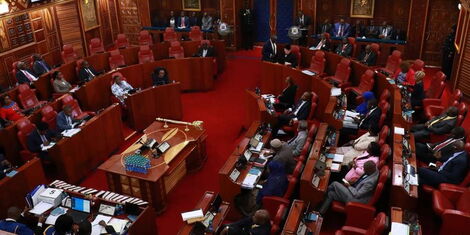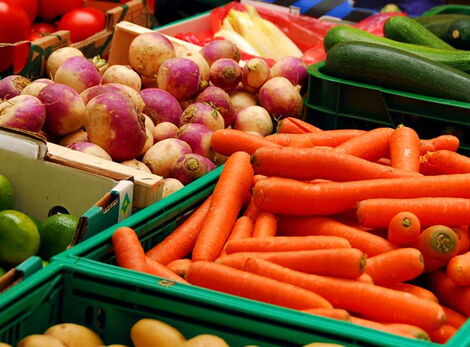16 Poorest Counties in Kenya - 2020 Report
by Eddy MwanzaThe Kenya Economic Report 2020, released on Monday, September 14, by the Kenya Institute for Public Policy Research and Analysis (KIPPRA), details the poorest counties in the country.
This comes at a time when the Senate is at a stalemate regarding the appropriate county revenue sharing formula.
Significant disparities exist in overall poverty incidence, from a low of 16.7% in Nairobi County to a high of 79.4 %.
Counties in arid-and semi-arid areas, which tend to have the lowest real Gross County Product (GCP) per capita.
The hardcore poor are defined as those without a meal a day and a shelter over their head.

Members of Senate in session at Parliament Building Nairobi on January 29, 2020.
Twitter
In Kenya, the hardcore poverty line is set at 8.6% and in the KIPPRA report, 16 counties fell below this mark.
The counties were listed as Turkana 52.7%, Samburu 42.2%, Mandera 38.9%, Busia 26.8%, West Pokot 26.2%, Garissa 23.8%, Marsabit 23.8%, Tana River 17.9%, Laikipia 15.0%, Kitui 12.8%, Uasin Gishu 12.1%, Kajiado 11.4%, Wajir 10.5%, Trans Nzoia 9.7%, Isiolo 8.9%, and Bungoma 8.8%.
The highest number of the actual poor are in Turkana, with 571,000 individuals followed by Mandera and Busia with 277,000 and 225,000 individuals, respectively.
The top ten counties with the highest number of hardcore poor account for 51.0% of the total hardcore poor nationally.
Nyeri had the least number of hardcore poor, with only 1,000 individuals, according to the report.
From the analysis, there was a strong positive correlation between household size at county level and poverty rates. Counties in arid-and semi-lands, which also have high poverty indices, registered the largest household sizes.
On its part, the Government has made efforts to address poverty and inequality across counties using equitable transfers. Between 2013/14 and 2018/19, a total of Ksh1.7 trillion was disbursed to counties in terms of equitable transfers.
A total of Ksh119.7 billion was issued between 2013/14 and 2018/19 in form of conditional grants. Kiambu, Nakuru and Machakos received the largest share of 6.8, 5.2 and 4.3%, respectively, while Lamu and Kirinyaga received the least shares of 0.8 and 1.0%, respectively.
Own Source Revenue (OSR) collections remain low. As of 2018/19, only seven counties (Nairobi, Mombasa, Narok, Nakuru, Kiambu, Machakos and Kajiado) collected more than Ksh1 billion.

Food items on display at a market.
File